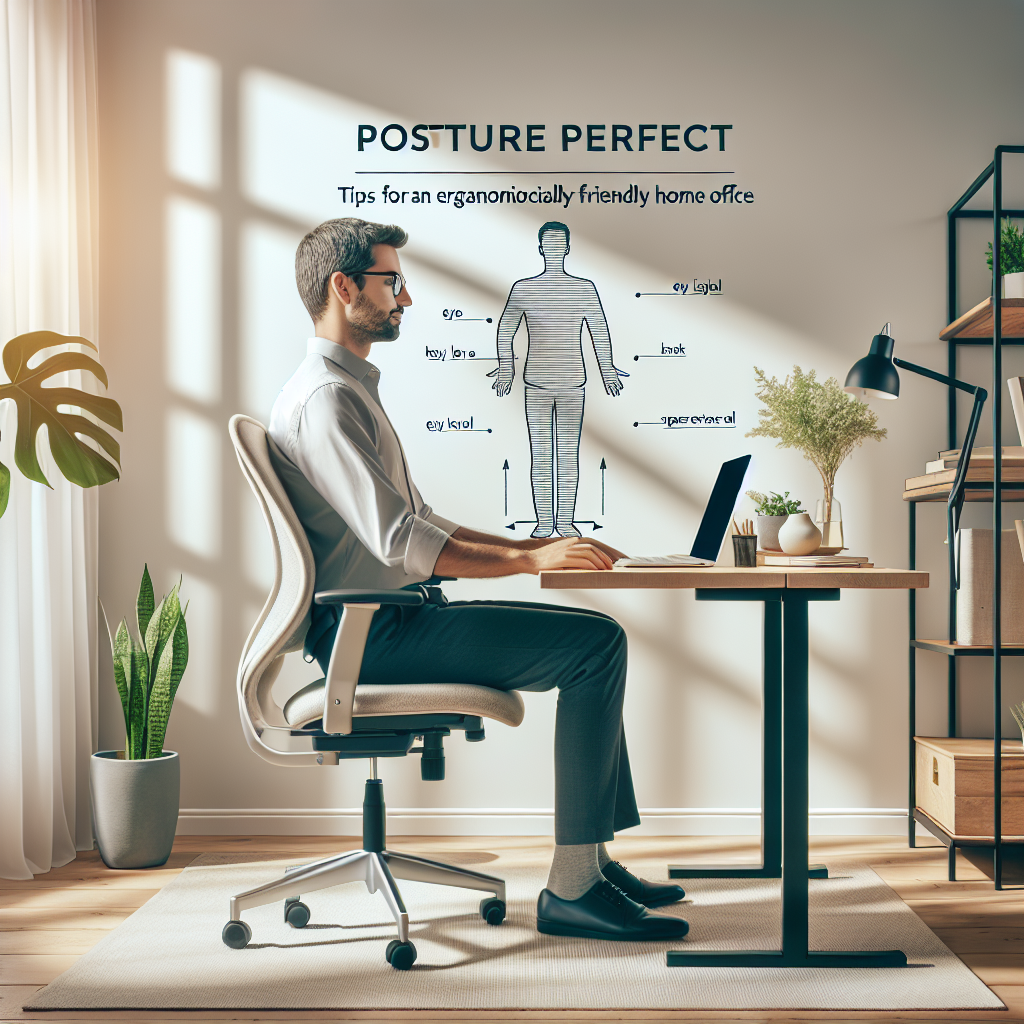Introduction
In today’s fast-paced digital world, working from home has become more than a trend; it’s a new reality for many of us. With this shift comes a significant challenge: ensuring our home office supports our health and productivity. Enter the concept of ergonomic design, which prioritizes the user’s comfort, safety, and efficiency. This article, Posture Perfect: Tips for an Ergonomically Friendly Home Office, will guide you through essential practices that foster a healthier and more productive workspace.
Why Posture Matters
According to the World Health Organization, poor posture can lead to numerous health problems, including chronic back pain, repetitive strain injuries, and reduced overall well-being. By taking proactive measures to create an ergonomically sound workspace, you can not only enhance your comfort but also increase your productivity.
Finding Your Ergonomic Setup
The Importance of a Good Chair
One of the most critical elements of an ergonomic home office is your chair. Research suggests that spending prolonged hours in an unsupportive chair can lead to serious health complications.
Key Features to Look For:
- Adjustability: Ensure your chair can be adjusted for height and tilt, adapting to your personal needs.
- Lumbar Support: Look for chairs designed to support the natural curve of your spine. A case study from the University of California revealed that employees who switched to ergonomically designed chairs reported a 50% decrease in discomfort.
Desk Height and Positioning
Your desk should complement your chair and allow for easy movement. The height of your desk should allow your elbows to be at a 90-degree angle when typing.
Ideal Desk Setup:
| Aspect | Ideal Measurement |
|---|---|
| Desk Height | Wrist level while seated |
| Monitor Height | Eye level or slightly below |
| Chair Height | Feet flat on the floor |
This alignment promotes a Posture Perfect: Tips for an Ergonomically Friendly Home Office setup, lessening the strain on your neck, shoulders, and arms.
Monitor Placement
Your monitor should be positioned an arm’s length away and just below eye level. If you frequently switch between multiple screens, consider an adjustable mount to achieve the ideal setup.
Case Study: Monitor Placement
A study published in the Journal of Social Sciences indicated that workers who maintained an optimal screen distance experienced a 30% increase in productivity. This adjustment minimizes eye strain and promotes a more natural seated position.
Keyboard and Mouse Position
The positioning of your keyboard and mouse plays a vital role in an ergonomic setup. Both should be at elbow height to avoid strain.
Recommendations:
- Keyboard: Keep it flat and close to the edge of your desk.
- Mouse: Use a wrist rest to reduce strain.
Creating a Positive Work Environment
Lighting and its Impact
Good lighting reduces eye strain and fatigue. Natural light is ideal, but if that’s not an option, invest in quality desk lamps that minimize glare and shadows.
Lighting Checklist:
- Adjustability: Opt for desk lamps that can be angled.
- Warm Light: Choose bulbs that offer warmth (between 2700K to 3000K) to create a calming atmosphere.
The Power of Breaks
Implementing a break schedule can significantly improve your focus and comfort. Techniques such as the Pomodoro Technique suggest working in intervals (25 minutes of work followed by a 5-minute break).
Case Study: Break Effectiveness
Research by the Draugiem Group found that employees who took regular breaks were 30% more productive than those who didn’t. These small movements help circulate blood and reduce fatigue.
Personal Comfort and Aesthetics
Your workspace is an extension of your personality. Decorate with items that inspire you—this can enhance mood and motivation.
Tips for Personalizing Your Space:
- Use uplifting artwork.
- Integrate plants for fresh air and aesthetics.
- Keep your favorite books or items within reach for inspiration.
Conclusion
Creating a Posture Perfect: Tips for an Ergonomically Friendly Home Office is not just about comfort; it’s about fostering an environment that enhances productivity and well-being. By optimizing your workspace with thoughtful adjustments, you’ll reap the long-term benefits of better health and efficiency. Take action today to cultivate your perfect ergonomic oasis at home.
FAQs
1. What is ergonomics, and why is it important for a home office?
Ergonomics is the science of designing your workspace and tools to fit your needs. In a home office, proper ergonomics can help prevent discomfort and injuries, making it essential for overall well-being.
2. How often should I take breaks while working?
It’s recommended to take a short break every 25-40 minutes. Implementing the Pomodoro Technique can help maintain focus while allowing for necessary rest.
3. What chair features should I look for?
Look for an adjustable chair with lumbar support, a comfortable seat, and the ability to swivel. A good chair can make a significant difference in your comfort level.
4. Can lighting affect my productivity?
Yes! Poor lighting can lead to eye strain and fatigue, negatively impacting your productivity. A well-lit workspace fosters focus and minimizes distractions.
5. How can I personalize my workspace without cluttering it?
Choose a few significant items that inspire you and keep the desk surface clear. Use vertical spaces for storage and display to maintain an organized yet personalized workspace.
Final Thoughts
Remember, the pursuit of a Posture Perfect: Tips for an Ergonomically Friendly Home Office is an ongoing journey. Continuously assess and adapt your environment as your needs change. Start your ergonomic transformation today and witness the profound impact it has on your work-life balance and overall health!

